- About us
- Markets
- Dry Cargo
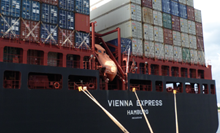
- Wet Cargo
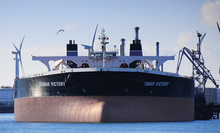
- Cruise
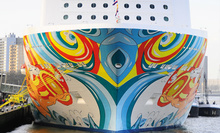
- Towage & SalvageTowage & Salvage
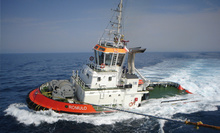
- Heavy Lift
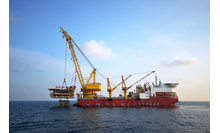
- Inland ShippingInland Shipping
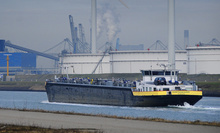
- Dredging
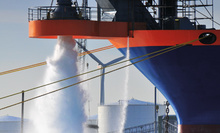
- EPCI CONTRACTORSEPCI CONTRACTORS
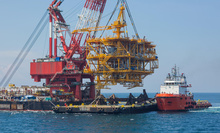
- Dry Cargo
- Products
- Information
- Our people
- Contact us
-
Brands
NEWS & EVENTS

overview
Tug operator works closely with rope firm
16-05-2019The tug operator at the world’s largest, offshore, coal transshipment terminal has worked closely with Lankhorst Ropes during the past 15 years to progressively optimise the service life for each mooring and towing line to reflect the specific requirements of its operation. Iskolden Tasimacilik ve Ticaret in Turkey operates two Turkish-built, Uzmar ASD pusher tugs.
Through its Turkish affiliate Iskolden, Oldendorff Carriers, the world's largest dry bulk shipping company, it operates the Transshipper Isken coal transfer platform in the Bay of Iskenderun on the southern coast of Turkey. Coal is brought to the offshore terminal by Capesize bulk carriers from Colombia and South Africa and delivered to the nearby 1,300MW power station.
The use of the Transshipper Isken overcomes the 6m draft limitation at the jetty in the most economical way and has saved the owners of the power station the enormous cost, time and logistics that would have been required to build a Capesize port.
Operating two miles offshore, the Isken platform is able to transship up to 50,000 tonnes of coal per day, with the assistance of two self-unloading barges and the two tugs which are used to tow the Isken platform from the port and manoeuvre it alongside the Capesize coal bulk carriers.
A barge is then pushed out and positioned between the platform’s twin hulls. The Isken unloads the coal using three cranes and transfers it via hoppers and conveyor belts to a central barge loading chute into the barge. As each barge is filled it is pushed to the jetty at the power station, where it self-unloads directly into a receiving hopper at 2,500 tonnes per hour in an environmentally friendly manner. It takes four days to complete the coal transshipment. The tugs are in operation throughout the year. On average, the coal transshipping terminal handles 22 Capesize bulk carriers per year.
Maximising rope service life is important to Iskolden given the risks of UV exposure and abrasion. During the first years of operation, 2002 onwards, Iskolden tried a number of rope suppliers but none could deliver the overall package in-depth technical know-how, assistance and rope quality to price relation they were looking for.
Iskolden uses various different types of Lankhorst ropes designed to offer maximum service life for each application. Two tugs are needed to manoeuvre the Isken platform next to the bulk carrier. The front tug uses Euromoor (68mm) with its higher elongation of 22 per cent, while the rear tug controls platform movement with the more rigid, lower eight per cent elongation Tipto Winchline (68mm).
Iskolden operation manager, Capt Emin Atalay, said: “Due to limited space on the front part of the tugs, the winch drums are sized for just 50m of rope. Initially we used Euromoor on the rear tug as well, but there was the problem of abrasion and friction on the fairlead. On both ropes we use an additional Lankforce (40mm) forerunner pennant. As a result, we’ve achieved more than five year’s pennant usage without damage by the chocks.”
As the platform moves alongside the bulk carrier, a Euromoor (56mm) rope with a Defender protective sleeve is thrown from the platform to the vessel. This sacrificial forerunner is used to prevent damage to the main Tipto Winchline (68mm). The forerunner is connected by a mandal shackle. In future, Iskolden expects to use the Lankonect, a synthetic fibre rope connection for the main line. The platform’s self-tensioning steel wire winches use Tiptolon Octoply (96mm) stretchers to dampen bulk carrier motion during bad weather. The nylon rope has the perfect elongation properties for this application while providing a high break load.
On the 10,000dwt hopper self-unloading coal barges, Iskolden uses Tipto Eight (80mm) ropes as a spring line during unloading.
Ease of rope handling is important for Capt Atalay, who said: “With more than 200 berth/un-berthing operations a year, these ropes are handled a lot by our crew, so we wanted a lightweight, floating rope with good elongation and UV resistance. We now normally achieve a rope service life of more than two years in this demanding application, this wasn’t the case with ordinary ropes used in the past.”
To keep the barge’s unloading boom steady during swell conditions the barge needs to be securely moored during loading – the problem faced by Iskolden was the short rope length from bollard to fairlead. Various ropes have been trailed but it found Euroflex (80mm) to be the best solution: good abrasion resistance and just the right elongation. Mainly at the aft station, the short lengths of ropes and wear caused by swell conditions in the past resulted in Iskolden having to replace ropes every eight to 12 months due to excessive abrasion damage. By switching to Strongline (60mm) with its great abrasion resistance, Iskolden now normally achieves more than two years’ service.
For the barge’s side tug rope, Euroflex (68mm) is used.
Capt Atalay said: “We need to have a short distance of 8m of strong heavy duty and elastic rope to deal with the rigid forces. We tried several types of ropes, but Euroflex is the best performing and long lasting one for us.”
On occasion, ropes are damaged during service or due to aging. Iskolden conducts its own residual strength testing to assess the rope’s suitability for continued service. Following damage to the braided jacket on a two-year-old Tipto Winchline, it took a sample from the rope and load tested it and was pleasantly surprised to find that the rope was still able to be used and, in fact, gave another two years’ service.
Capt Atalay said: “Working with Lankhorst has allowed us to get the maximum service life per rope. Lankhorst’s willingness to share information has allowed us to use their ropes intelligently – making the most of each rope’s strengths – and avoid the disruption and uncertainty we had experienced previously using other ropes.”
Click here to download the article in International Tug & OSV magazine of May/June 2019.

